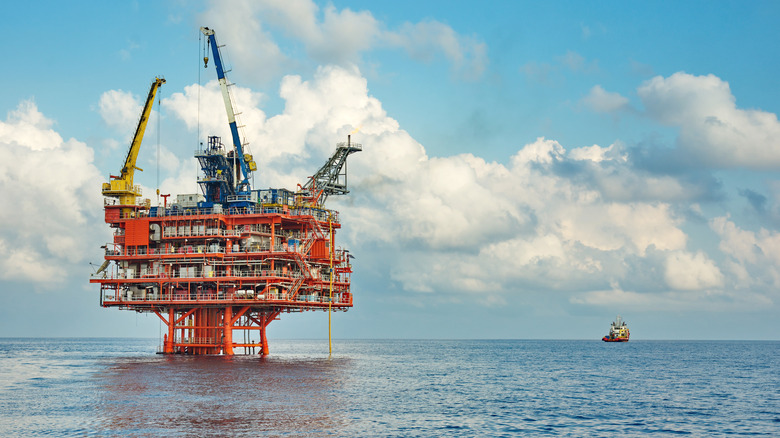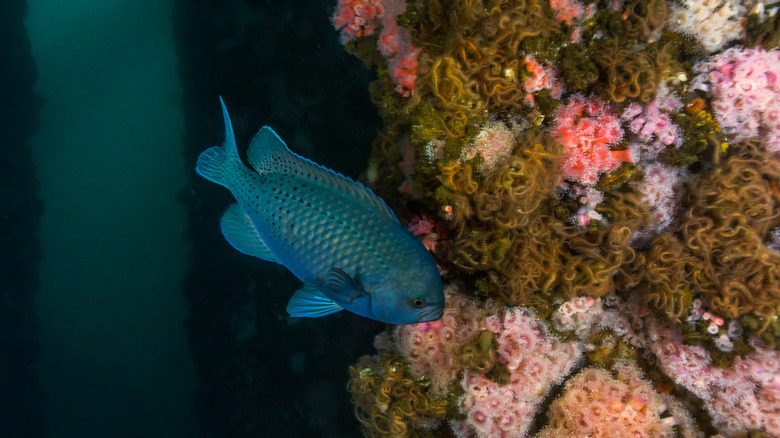Here's What Happens To Abandoned Oil Rigs
Oil rigs have long been understandably associated with immense environmental damage. Not only do they extract fossil fuel for vehicles, but the rigs themselves can lead to massive local environmental damage when a spill occurs. According to the Center for Biological Diversity, the BP oil spill of 2010 led to millions of gallons of oil and toxins dispersing in the Gulf of Mexico and killed tens of thousands of birds, marine mammals, fish, and other animals.
Even if everything goes relatively well, when a rig is no longer of use, it presents a new challenge. Redeploying it elsewhere or otherwise bringing it back inland for salvaging can be very expensive. As the BBC reports, a solution has been to sink them and allow nature to claim them as artificial reefs, which in a way is a sort of reconciliation prize for the past damage they've often caused to marine life.
Artificial reefs made from oil rigs
Structures being used as artificial reefs is far from new. Large and stable constructs such as vessels from shipwrecks (including those of the World Wars) and the intentional sinking of ships that have been decommissioned have proved to be among the most successful artificial reefs, per the New Heaven Reef Conservation Program. A caveat is that large concentrations of toxic material should be removed when reef construction is planned. While there is debate over how much of an oil rig should be allowed to remain submerged, per Wired, many have proved to be among the most flourishing artificial reefs to date (via GreenBiz).
Even when still in use, their large support beams attract sea life with coral anchoring themselves to them, in turn drawing in various fish and invertebrates. A downside to this intended revitalization that many biologists have noted, though, is that these new underwater reefs can create unnatural environments, with animals potentially entering new areas of the ocean and encountering/out-competing species that they normally wouldn't (via Scuba Diving).

